Curacao & St Maarten: Central Bank Unveils Designs For New Caribbean Guilder Circulation Coinage
The Centrale Bank van Curacao en Sint Maarten hosted simultaneous events at locations in Curaçao and Sint Maarten.
The currency project was planned since the dissolution of the Netherlands Antilles in October 2010. At that time, the island of Curacao and the Dutch-governed half of Saint or Sint Maarten became autonomous territories of the Kingdom of the Netherlands. Bonaire, Saba, and Sint Eustatius now fall under the direct administration of the Netherlands and presently circulate the US Dollar as legal tender. The banknotes and coins will be introduced into circulation on the 31st March 2025 on both islands and be abbreviated with the letters ‘Cg’ and sub-divided into 100 cents. The full range of circulation quality coins are produced by the Royal Canadian Mint on behalf of the Centrale Bank van Curacao en St Maarten.
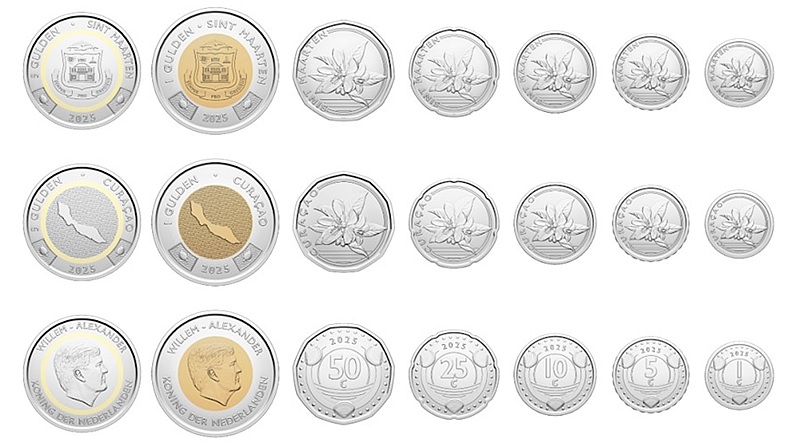
Obverse, 1 – 50 Cents. The obverse design which is common to the coins of Curacao and St. Maarten and the denominations one to fifty cent depicts the Orange Blossom flower. The plant is associated with good fortune across many cultures and symbolises purity, virtue, and fertility. To the left of the orange blossom and along the rim is the name of the country in capital letters and also connects a stylised Caribbean sky and ocean waves.
Reverse, 1 – 50 Cents. The reverse design which is common to the coins of Curacao and St. Maarten and the denominations one to fifty cent includes the coin’s numeral representing the face value. The letter ‘c’ denoting the name of the currency sub-division and four lines below the numeral and letter representing ocean waves are all centred. Featured along the rim are three equally spaced Tellin shells which are found throughout the Caribbean. In between the shells are three groups of ten pearls along the rim which is in reference to 10-10-10, or the 10th October 2010 - when Curaçao and Sint Maarten’s status as autonomous countries within the Kingdom of the Netherlands commenced as well as the starting point of the Caribbean guilder. Above the primary design and between the left and right Tellin shells is the year of issue, 2025.
The one cent coin is finely reeded along the edge.
The five cent coin is coarsely reeded along the edge.
The ten cent coin has an interrupted smooth and finely reeded edge.
The twenty five cent coin has seven indentations along the edge.
The fifty cent coin is round with eleven smooth sides.
The one Guilder coin is bi-metallic consisting of a nickel-plated ring and bronze-plated steel centre.
The five Guilder coin is bi-metallic consisting of three pieces, a nickel-plated steel outer ring, a brass middle ring and a nickel-plated steel centre.
1 and 5 Guilders – Curacao. The reverse side of these two denominations includes a map of the island of Curacao, surrounded by the Caribbean Sea, its waves formed by repetitive micro-text which reads CURACAO and which is centred. Above the map is the text 1 GUILDER or 5 GUILDERS and CURACAO. Shown underneath the map of the island of Curaçao are two Green Sea Turtles native to the Caribbean Sea and spaced between the turtles is the year of issue, 2025. On the 5 Guilder coin, there is an orange border surrounding the map of Curacao which is a reference to the Dutch Royal dynasty known as the House of Orange. The obverse side includes an effigy of HM King Willem Alexander facing to the right. The legend above reads WILLEM-ALEXANDER and below the king’s likeness is the additional text KONING DER NEDERLANDEN. The smooth edge of both denominations includes the indented inscription GOD*ZIJ*MET*ONS (God be with us)
1 and 5 Guilders – St Maarten. The reverse side of these two denominations includes the coat of arms of St Maarten* which is centred. Above the crest is the text 1 GUILDER or 5 GUILDERS and SINT MAARTEN. Shown underneath the crest are two Green Sea Turtles native to the Caribbean Sea and spaced between the turtles is the year of issue, 2025. On the 5 Guilder coin, there is an orange border surrounding the Coat of Arms of Sint Maarten which is a reference to the Dutch Royal dynasty known as the House of Orange. The obverse side includes an effigy of HM King Willem Alexander facing to the right. The legend above reads WILLEM-ALEXANDER and below the king’s likeness is the additional text KONING DER NEDERLANDEN. The smooth edge of both denominations includes the indented inscription GOD*ZIJ*MET*ONS (God be with us)
*The Coat of Arms of St Maarten features several national symbols, such as a shield with a rising sun, the brown pelican, the Courthouse, the border monument, and the national flower orange-yellow sage. Under the shield is a ribbon with the Latin inscription ‘SEMPER PRO GREDIENS’ (always progressing).
| Denomination | Metal | Weight | Diameter |
| 1 Cent | Nickel-plated steel | 1.5 g. | 15 mm. |
| 5 Cents | Nickel-plated steel | 2.42 g. | 16.75 mm. |
| 10 Cents | Nickel-plated steel | 2.9 g. | 18.25 mm. |
| 25 Cents | Nickel-plated steel | 3.65 g. | 20 mm. |
| 50 Cents | Nickel-plated steel | 4.45 g. | 22.25 mm. |
| 1 Guilder | Bi-metallic | 7.2 g. | 28 mm. |
| 5 Guilders | Bi-metallic | 8.6 g. | 25.85 mm. |
The Centrale Bank van Curacao en St Maarten have publicised that the coins, regardless of their issuing authority are intended to circulate interchangeably on both islands. The territory’s present currency, the Netherland Antilles guilder will be replaced at a one-to-one basis with the Caribbean Guilder and remains at the fixed exchange rate against the US Dollar at XCG 1.79. The Centrale Bank van Caracao en St Maarten have indicated the two currencies will remain legal tender for a period of three months from the date of introduction of the Caribbean Guilder which will be identified with the ISO code XCG. Therefore, the currency of the Netherland Antilles Guilder will be redeemable at the offices of the Centrale Bank and representative offices on both islands. For additional information about both the coins and banknotes unveiled by the Centrale Bank van Curacao en Sint Maarten, please visit their dedicated website.

Download the Greysheet app for access to pricing, news, events and your subscriptions.
Subscribe Now.
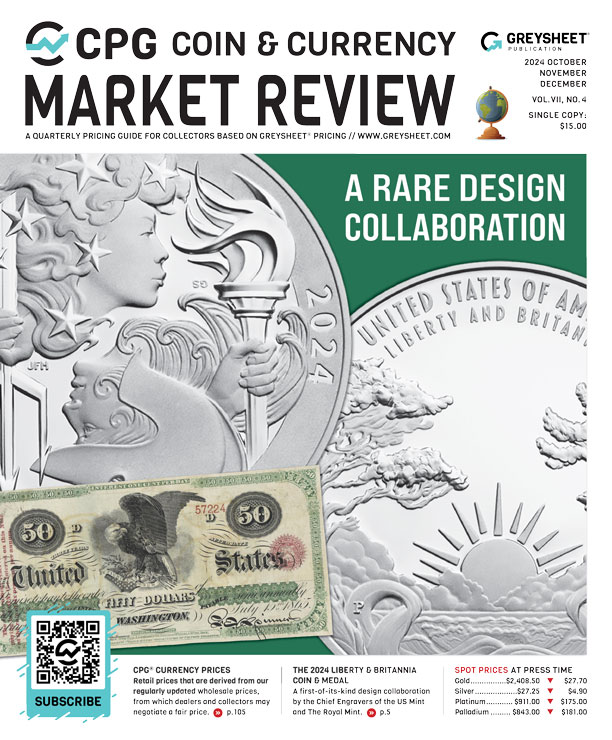
Subscribe to CPG® Coin & Currency Market Review for the industry's most respected pricing and to read more articles just like this.
Author: Michael Alexander


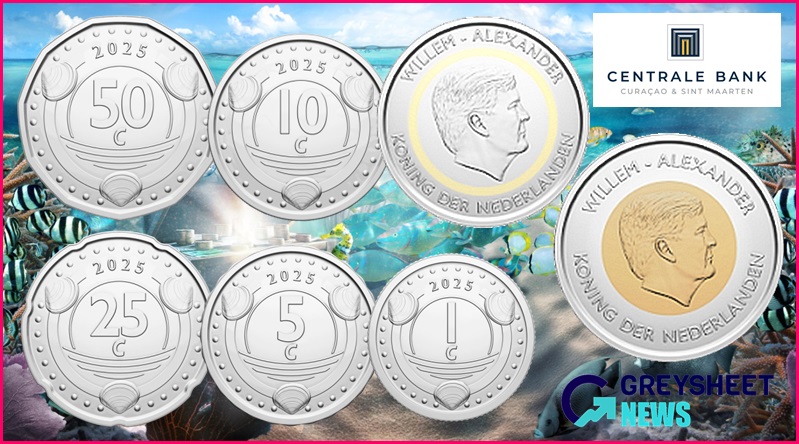






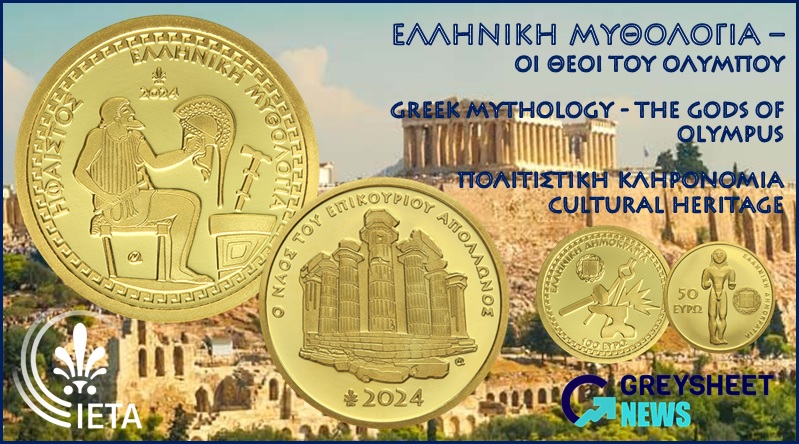

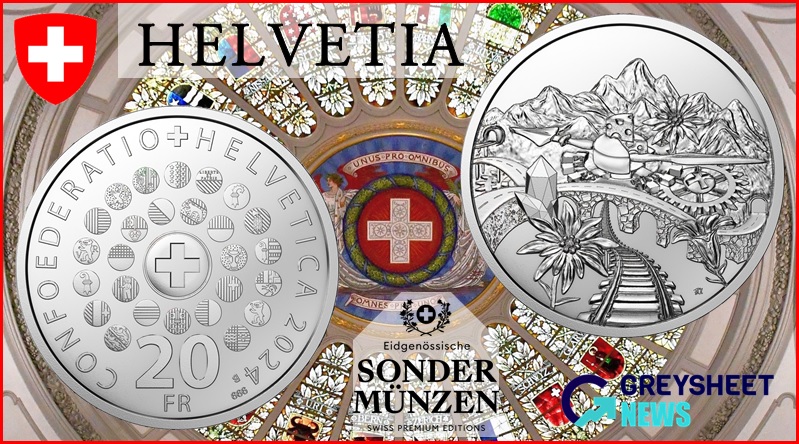
Please sign in or register to leave a comment.
Your identity will be restricted to first name/last initial, or a user ID you create.
Comment
Comments